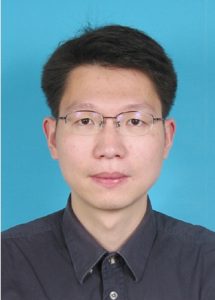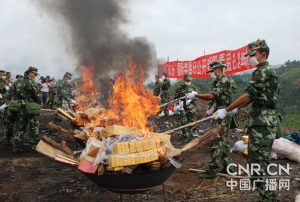Memo #198
By Kai Chen – chenkai [at] zju.edu.cn
 The Golden Triangle, the mountainous region bordering Myanmar, Vietnam, Laos and Thailand, is known as a major centre for drug production. Since Khun Sa, kingpin of the region’s heroin trade, was forced into retirement in 1996, large-scale production of methamphetamine has developed along the Myanmar-China border. Unlike heroin, methamphetamine can be created from commercially available chemicals, commonly found in cold and flu medications. The easy availability of raw materials means that the profits generated from the production of methamphetamine are higher than those from heroin.
The Golden Triangle, the mountainous region bordering Myanmar, Vietnam, Laos and Thailand, is known as a major centre for drug production. Since Khun Sa, kingpin of the region’s heroin trade, was forced into retirement in 1996, large-scale production of methamphetamine has developed along the Myanmar-China border. Unlike heroin, methamphetamine can be created from commercially available chemicals, commonly found in cold and flu medications. The easy availability of raw materials means that the profits generated from the production of methamphetamine are higher than those from heroin.
As a result of methamphetamine smuggling, threats to the security and well-being of local people, such as HIV/AIDS and low intensity conflicts, are now commonplace in villages along the Myanmar-China border populated by cross-border ethnic groups, such as the Shan, Wa and Kachin peoples. A growing humanitarian crisis has been exacerbated by armed groups forcibly recruiting from among the local populations. Since children are easily manipulated, they are especially sought out as an alternative to adult combatants. To safeguard their village or ethnic group, some families are handing their over children as surety to armed groups. These child soldiers are especially vulnerable to exploitation.
According to the U.S. State Department, Myanmar is a major global supplier of methamphetamine and the primary source for foreign-made methamphetamine in China. In 2011, Burmese police seized 5.89 million methamphetamine tablets and 33 kilograms of crystal methamphetamine. It has been reported that some ethnic militias along the Myanmar-China border have become involved in producing and distributing methamphetamine.
The Burmese government and international authorities have struggled to detect methamphetamine production: remote sensing by satellite only reveals outdoor cultivation of opium poppies, but the chemical labs that produce methamphetamine indoors can rarely be detected using these means. In view of the current situation, drug control forces on the ground are a better option. But using such means is impossible in the areas outside the control of the Burmese government and ethnic militias with which it has cease-fire agreements. Addressing the growing security crisis in Myanmar-China border regions poses a very serious challenge for local and national authorities in both countries.
About the Author:
Dr. Kai Chen is a post-doctoral research fellow at the Center for Non-Traditional Security and Peaceful Development Studies, College of Public Administration, Zhejiang University, China.

Security personnel burn drugs seized in raids near the China-Myanmar border in Yunnan Province. (Source: Irrawaddy, 2012)
Links:
- Where is Burma’s ‘war on methamphetamine’?, Democratic Voice of Burma, 2012
- “The Report of the International Narcotics Control Board for 2011,” International Narcotics Control Board, 2011
- “The 2012 International Narcotics Control Strategy Report, Volume I: Drug and Chemical Control,” United States Department of State, 2012
- World Drug Report, United Nations Office on Drugs and Crime, 2012
[…] http://www.asiapacificmemo.ca/methamphetamine-smuggling-along-the-myanmar-china-border-threatens-loc… […]